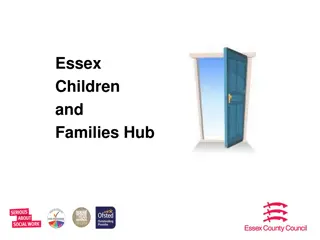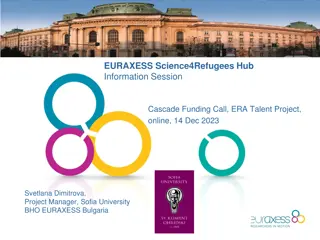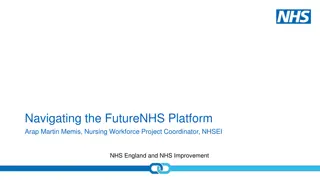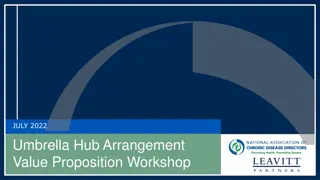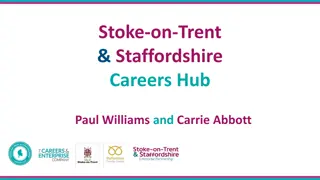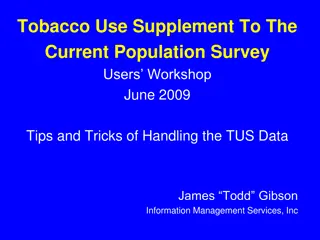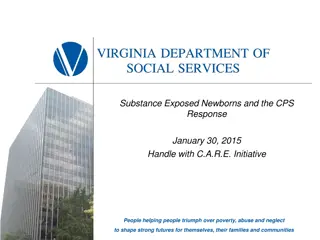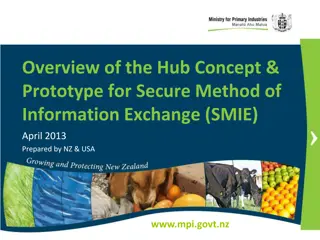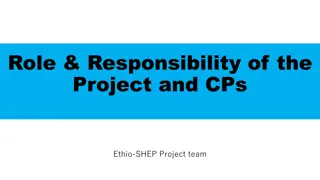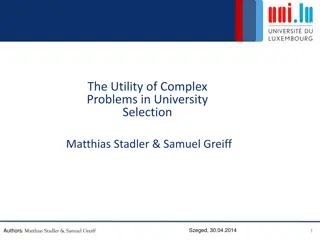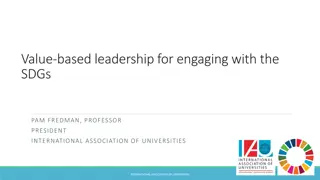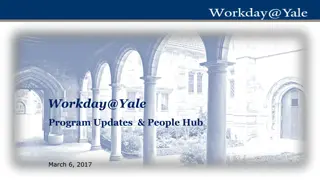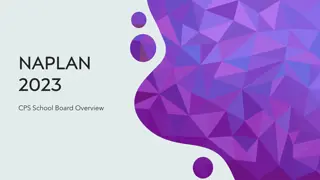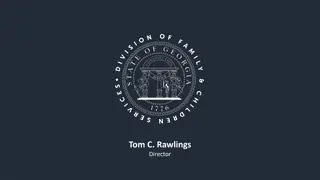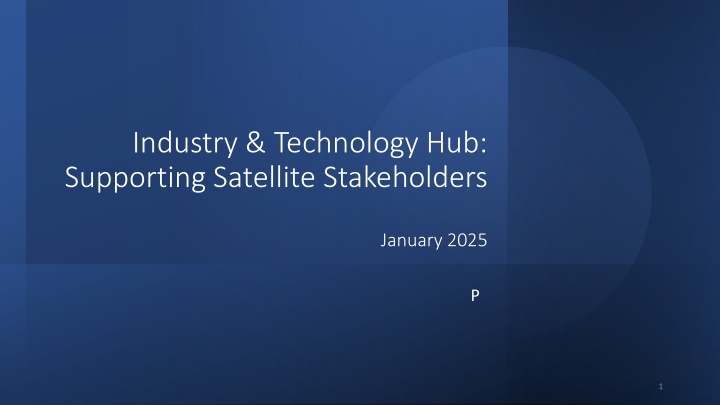
Impact of Satellite Constellations on Astronomy
Learn about the concerns regarding the increasing deployment of low-orbiting satellite constellations and their effects on astronomical observatories. Discover how collaboration between astronomers and the satellite industry is key to finding technological solutions to mitigate these impacts.
Download Presentation

Please find below an Image/Link to download the presentation.
The content on the website is provided AS IS for your information and personal use only. It may not be sold, licensed, or shared on other websites without obtaining consent from the author. If you encounter any issues during the download, it is possible that the publisher has removed the file from their server.
You are allowed to download the files provided on this website for personal or commercial use, subject to the condition that they are used lawfully. All files are the property of their respective owners.
The content on the website is provided AS IS for your information and personal use only. It may not be sold, licensed, or shared on other websites without obtaining consent from the author.
E N D
Presentation Transcript
Industry & Technology Hub: Supporting Satellite Stakeholders January 2025 P 1
Astronomy Concerns with Satellite Constellations Low-orbiting satellite constellation projects are proliferating, with hundreds of thousands of satellites proposed to deliver broadband, earth imaging and other useful services in the coming decade Satellites operating at lower altitudes can affect astronomical observatories, impairing optical and infrared astronomical science and hampering radio astronomy Spacecraft at lower altitudes typically spend extended periods in sunlight over regions in darkness, making them even more visible Mitigating the impact of satellites on astronomy is a complex and novel technical challenge: Spacecraft surfaces are reflective for thermal reasons, and orientation changes may be limited Astronomical observatories are often limited in scheduling around frequent satellite passes Radio Astronomy sites may require Radio Quiet Zone-level protection Successful technological and operational solutions have been identified through collaboration between astronomers and the satellite industry, but are still in the early stages of development
The International Astronomical Union (IAU) proposed a formal organization for this purpose: The IAU Centre for the Protection of the Dark & Quiet Sky from Satellite Constellation Interference (IAU CPS) Established in April 2022, the IAU CPS offers resources, collaboration and encouragement for voluntary action from both industry and astronomy Current co-hosts of the IAU CPS Centre alongside IAU are: NOIR-Lab, a U.S. center for ground-based optical astronomy funded by the National Science Foundation (NSF), and the SKA Observatory (SKAO), a UK-based intergovernmental organization building the world s most powerful network of radioastronomy telescopes 4 Hubs: Industry & Technology Hub, Satellite Hub, Community Engagement Hub and Policy Hub. The IAU Centre
The Industry & Technology Hub of the IAU CPS is meant to engage the technical insights of both satellite stakeholders and astronomers to build the tools and resources to spur voluntary adoption of mitigations. Industry & Technology Hub IAU Centre for the Protection of the Dark & Quiet Sky from Satellite Constellation Interference The I&T Hub s aims to build satellite industry awareness of their potential to impact astronomy, and to spur development and adoption of accessible, affordable and effective mitigations of the effects of satellite constellations on astronomical science.
For both Astronomy and satellites to thrive, the For both Astronomy and satellites to thrive, the communities must collaborate communities must collaborate Most space operators committed good space stewardship As awareness builds, satellite stakeholders are increasingly willing to engage and collaborate but seek concrete steps Mitigation options are still in early stages Optical mitigation in particular is a novel technology challenge Early industry leadership from SpaceX Starlink in trialing design, operational mitigations, sharing info Collaboration with SatHub or IAU CPS to monitor test satellites and constellations (AST, Amazon Kuiper, Planet) Most scientific/technical focus on defining/quantifying the impact on astronomy More work needed to develop viable, effective mitigating options Satellites & Astronomy
INDUSTRY & TECHNOLOGY HUB: SATELLITE SECTOR & MITIGATION ADOPTIONI GOAL: GOAL: Establish accessible, affordable and effective mitigations for broad-based adoption CLARITY: CLARITY: Operators are more likely to voluntarily adopt best practices that are well- defined AVAILABILITY: AVAILABILITY: Easily accessible/affordable approaches are more likely to be integrated into routine satellite development processes FLEXIBILITY FLEXIBILITY: Performance-based metrics should leave room for customization and ongoing innovation EARLY ENGAGEMENT EARLY ENGAGEMENT: Early identification of concerns and viable mitigations are more likely to be adopted, avoiding prohibitive projects delays and change order costs
AREAS OF ADDITIONAL MITIGATIONS WORK PREDICTIVE TOOLS ON-ORBIT RESOURCES MITIGATING TECHNIQUES Open source predictive modelling software Test labs open to ground testing satellites (Bi-directional Reflectance Distribution Function (BRDF) Reliable and consistent observation measurements of flown test spacecraft Quick turnaround to inject learnings into spacecraft design updates Agreement of appropriate space data publication, refresh Assess effectivity of existing mitigating techniques (black paint, reflective mirrors, operational adjustments) Add suppliers of helpful mitigation types Further Basic R&D into non- reflective materials Further technical exploration of additional mitigation approaches
I&T Hub created to build awareness, encourage collaboration among satellite stakeholders and astronomers, and build tools and resources to spur voluntary adoption of mitigations. Individuals can join to offer support where needed. JOIN 16 Member Companies and counting INFORM - Updates, info exchanges ( Essential Reading List ) ENGAGE technical briefings and discussions on mitigation techniques and available tools & resources (Technical Advisory Group, Mitigations Directory) ASSESS Access to SatHub observation tools, technical exchanges with assigned Astronomer Guide How to Join the Industry & Technology Hub NO COST TO PARTICIPATE IN I&T HUB Contact us at: industry industry- -tech@cps.iau.org tech@cps.iau.org
Thank you! industry industry- -tech@cps.iau.org tech@cps.iau.org 9

